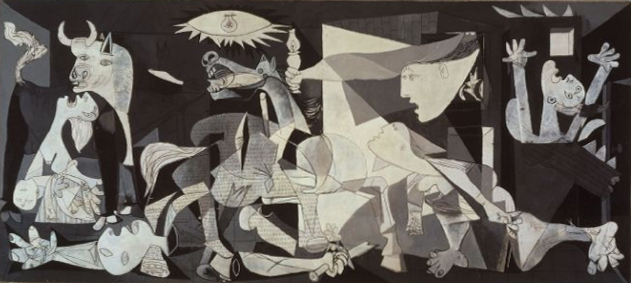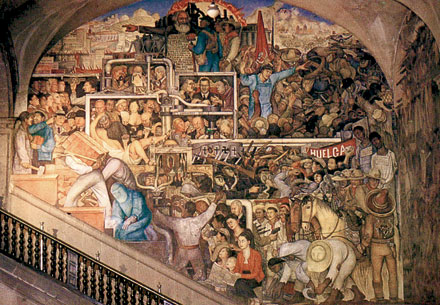Guernica ~Pablo Picasso (political upheaval)
Pablo Picasso created the Guernica to demonstrate the consequences and suffering of war, specifically after the Spanish Civil War. Although The House of the Spirits revolves around the Chilean Revolution in 1973, elements parallel both countries. The painting depicts violence and pain, yet it is a symbol of anti-war. Similarly, Allende wrote her novel from the opposite political view of her personal beliefs. Political upheaval is a prominent theme. Even though Allende was related to the socialist president, her central character, Estaban Trueba, was strongly capitalist. In addition to this contrast, both demonstrate the dark and dreary times of conflict. The black, white, and gray portray a solemn tone amongst the chaos and suffering. On his work, Picasso commented “The Spanish struggle is the fight of reaction against the people, against freedom”. This same quote can be applied to the characters in Chile or in The House of the Spirits.
Power of Women ~Biswarup Ray
|
Class Struggle ~Diego Rivera (class struggle)
|
Citations:
"Guernica (painting)." Wikipedia. Wikimedia Foundation, 12 May 2014. Web. 04 Dec. 2014.
"Power Of Women by Biswarup Ray." Fine Art America. N.p., n.d. Web. 04 Dec. 2014.
"Pablo Picasso." Guernica by. N.p., n.d. Web. 04 Dec. 2014.
"Images of Murals by Diego Rivera in the Palacio Nacional De Mexico."Images of Murals by Diego Rivera in the Palacio Nacional De Mexico. N.p., n.d. Web. 4 Dec. 2014.
"The Socialist Art of Diego Rivera." Resources Research. N.p., n.d. Web. 04 Dec. 2014.
"Guernica (painting)." Wikipedia. Wikimedia Foundation, 12 May 2014. Web. 04 Dec. 2014.
"Power Of Women by Biswarup Ray." Fine Art America. N.p., n.d. Web. 04 Dec. 2014.
"Pablo Picasso." Guernica by. N.p., n.d. Web. 04 Dec. 2014.
"Images of Murals by Diego Rivera in the Palacio Nacional De Mexico."Images of Murals by Diego Rivera in the Palacio Nacional De Mexico. N.p., n.d. Web. 4 Dec. 2014.
"The Socialist Art of Diego Rivera." Resources Research. N.p., n.d. Web. 04 Dec. 2014.



